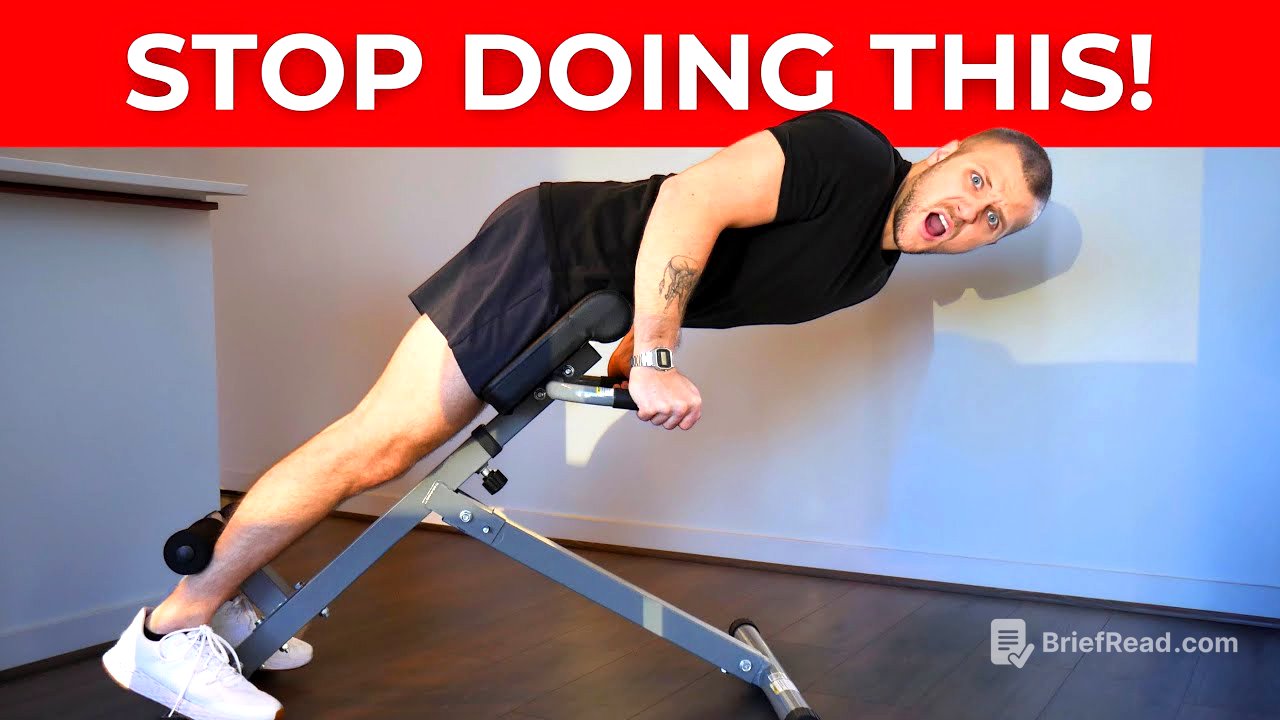TLDR;
This video addresses back pain associated with bending and rounding the back, a common issue that often leads to a pain avoidance cycle. It emphasizes that overcoming this pain doesn't require extreme exercises from the start. Instead, it advocates for a gradual, methodical approach to rebuild tolerance and strength. The key is to begin with simple, supported movements and progressively increase the range and intensity, focusing on small, incremental gains to desensitize the back and nervous system.
- Identifies the pain avoidance cycle and its impact on back pain.
- Recommends starting with gentle, supported movements to rebuild tolerance.
- Advocates for a gradual progression in range and intensity.
- Highlights the importance of consistency and patience in the recovery process.
- Suggests targeted strengthening exercises like Roman chair extensions and Jefferson curls once a foundation of tolerance is established.
Introduction to Back Pain and the Pain Avoidance Cycle [0:00]
The speaker shares their personal experience with back pain triggered by simple movements like bending forward, which led to avoiding such actions. This avoidance creates a pain cycle where the body becomes more sensitive, resulting in increased pain with even slight movements. The speaker initially believed the issue was a biomechanical problem needing correction but later realized the importance of a slow, methodical approach to reverse this cycle.
The Problem with Starting Too Aggressively [2:05]
Many people with lower back pain immediately jump into strengthening exercises like Jefferson curls or back extensions. While these exercises can be beneficial, they are often too intense as a starting point. Beginning with extreme exercises can exacerbate sensitivity and intolerance in the back, making the pain worse.
Starting with Gentle Movements to Rebuild Tolerance [3:23]
The initial step involves gentle flexion and extension exercises in a seated position with elbow support on the legs. This supported version of a cat-cow exercise allows for controlled, unloaded movement, helping to explore the range of motion without triggering pain. After a few days or weeks of comfortable practice, the support can be removed to gradually increase the range of motion in flexion and extension.
Progressing to Standing Positions and Increasing Range of Motion [4:43]
The next progression involves performing quarter or half reps of bending forward in a standing position, mimicking everyday movements like leaning over a counter. Over time, the range of motion can be increased from quarter to half, then to three-quarters, and eventually to full range, such as touching the floor or toes. Consistency and gradual pushing on good days are essential for making progress.
Entering the Strength Phase with Targeted Exercises [5:58]
Once normal, everyday bending feels comfortable, the focus shifts to increasing resilience and strength. Exercises like Roman chair extensions or back extension machines can be introduced. Starting slowly with isometrics or assisted range of motion is crucial, gradually increasing the depth and removing assistance as comfort and tolerance improve. Jefferson curls can also be incorporated to enhance the strength and skill of bending forward with a load.
The Importance of Gradual Progress and Desensitization [7:02]
Bulletproofing the back involves identifying problematic movements, scaling them back to a comfortable level, and gradually building up from there. The benefits, such as pain reduction, increased range of motion, and confidence, come from the incremental gains made during the progressions. This process desensitizes the back and nervous system to various positions and ranges of motion, emphasizing that the journey and small victories are more important than reaching the most extreme exercises.









